This Mom Stitched Dolls for Her Daughter, Now It’s a Rs 2 Lakh/Month Business
“No business plan, no name, and no pricing strategy… I just walked into a flea market with 30 handmade eco-friendly dolls in hand — and before the day was over, I had sold out,” recalls Veena Peter, who owns ‘Tara Doll House’ in Bengaluru.
“I still remember I priced my dolls after doing some basic market research at the flea market,” she exclaims. Veena’s journey began as a mother’s attempt to comfort her daughter, but it has grown into a source of inspiration for many other mothers. It offers a thoughtful and gentler alternative to the plastic-dominated world of children’s toys. She says her venture was once a bedtime dilemma.
Veena, originally from Chennai, now calls Bengaluru her home. After earning a degree in business administration and a master’s in human resources from Women’s Christian College, Chennai, she began her professional life in the corporate sector.
Her career spanned nearly a decade, with roles in customer support at companies like British Airways, Lufthansa, and Caratlane. But in 2015, she walked away from all of it, unsure of what was next. “I knew I did not want to go back to a corporate job. I started helping my husband with his educational startup while figuring out my path,” she tells The Better India.
Motherhood, as it turned out, became the compass. When her daughter Tara was born, Veena embraced a kind of parenting that mirrored her values, being intentional, present, and free from digital distractions.
“We don’t let our daughter stare at the TV, and I made a conscious decision to put my phone down,” she says. “I didn’t want my child to grow up next to a screen. I wanted to be truly there and enjoy every moment.”
From one stitch to a series: The doll that started it all
As Tara grew, her love for dolls also developed, and so did her mother’s discomfort with the options available.
“Most of the dolls were plastic, synthetic, and flimsy. They did not last for long, offered no comfort, and were far from eco-friendly,” she says. The idea took root one night when Tara, who had a habit of falling asleep with Veena’s hair under her nose, needed something familiar to soothe her.
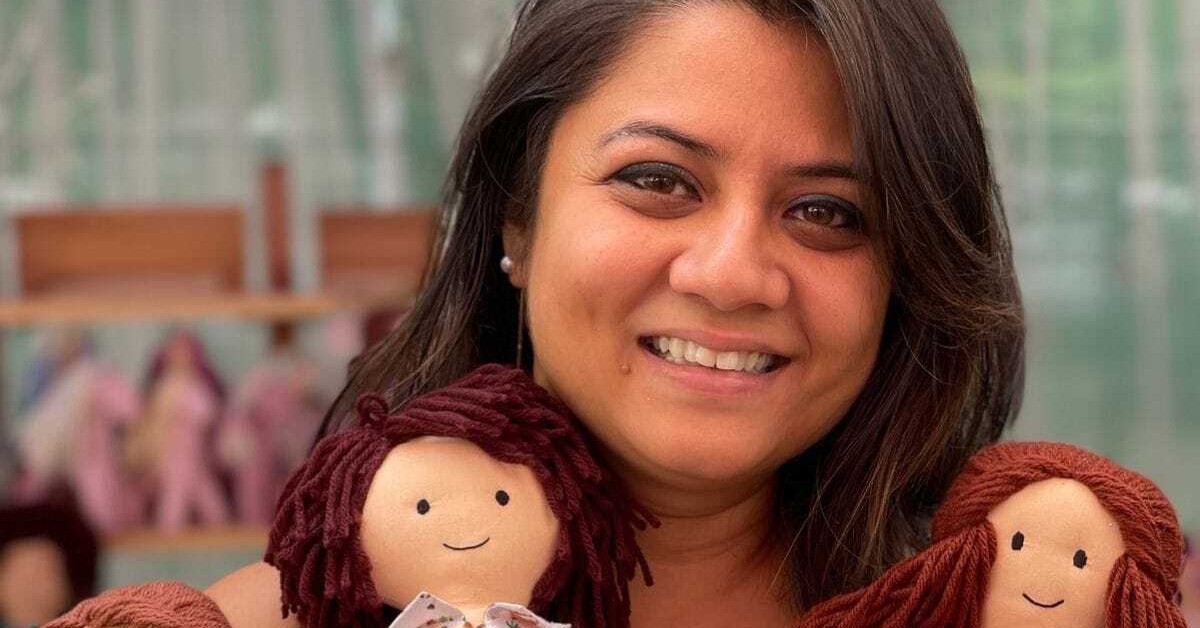 Veena was not keen to buy the plastic and synthetic dolls available in the market for her daughter
Veena was not keen to buy the plastic and synthetic dolls available in the market for her daughter
“I thought, what if I could make a doll with long and soft hair to give her that same sense of comfort when I was not around?” says the mompreneur.
Her search for the perfect doll was a series of disappointments. “I could not find a single one that felt right, everything was made of plastic, had short hair, and was of poor quality, that tangled easily. So, I decided to make one myself, ” she says. And that is exactly what she did.
The mother stitched the first doll using scrap fabric and wool, and before long, she had a few more. As she showed them to friends, they were amazed by the idea, and soon their children were asking for one too. This started as a personal project, but it helped the entrepreneur connect with others looking for the same item.
The real turning point came when Veena decided to test her creations at a local flea market. “I made 30 dolls, with no idea how to price them. I just went with what felt fair. And they sold out before the event ended,” she explains.
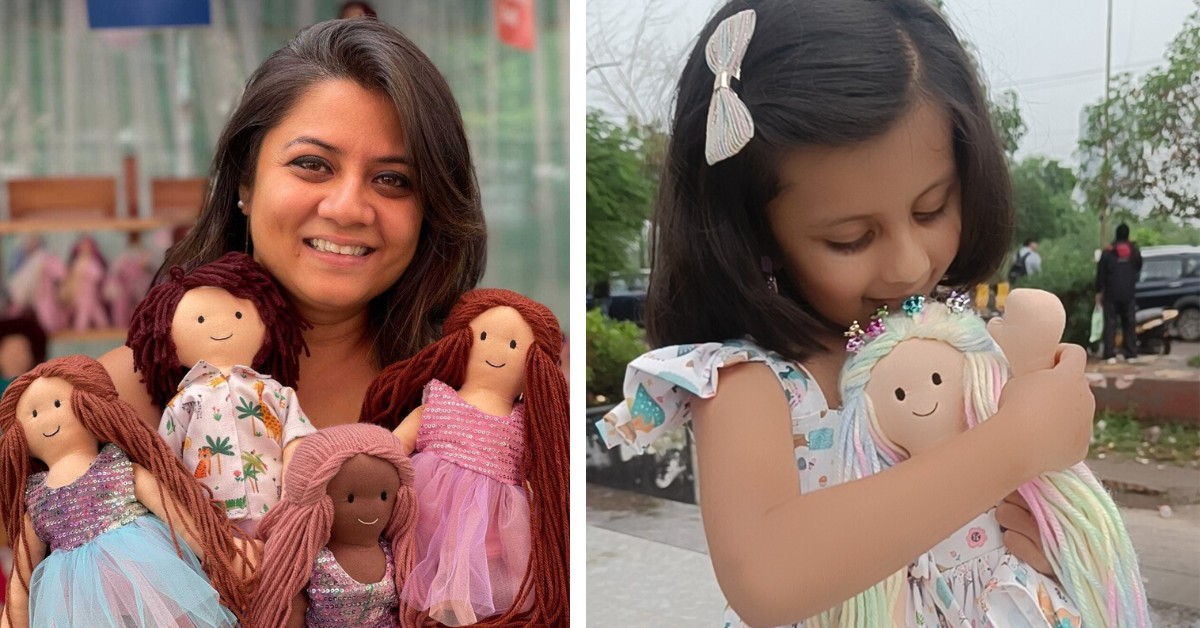 Veena decided to sell her dolls at a local flea market for the first time and all of them got sold
Veena decided to sell her dolls at a local flea market for the first time and all of them got sold
It was this unexpected success that gave the mother the confidence to turn her passion into something more. And so, ‘Tara’s Doll House’ was born, a brand named after the little girl who had inspired it all.
Learning the art of doll-making
Launched officially in early 2023, the business had taken shape slowly over the previous months. Without any background in design, the entrepreneur turned to Pinterest and YouTube to teach herself the craft. “I would look up how to make rag dolls, study the materials, and figure out how to bring them together. It was all trial and error,” she says.
Every doll begins with a traced pattern on cotton, hand-cut and stitched along the outlines. The stitched forms are turned inside out and filled with a specific cotton-polyester mix that does not shrink after a single wash. “I could not use 100% cotton because it gets lumpy after a wash. This blend keeps the dolls soft and intact,” she explains.
The long hair is made from wool, sewn partially by machine on specific sides and finished by hand. The faces are drawn on with fabric markers, and the dolls are dressed in removable outfits, encouraging imaginative and open-ended play.
“We don’t stitch the clothes to the dolls because dressing them up is half the fun. It extends their playtime and helps them connect with the doll,” explains the 39-year-old entrepreneur.
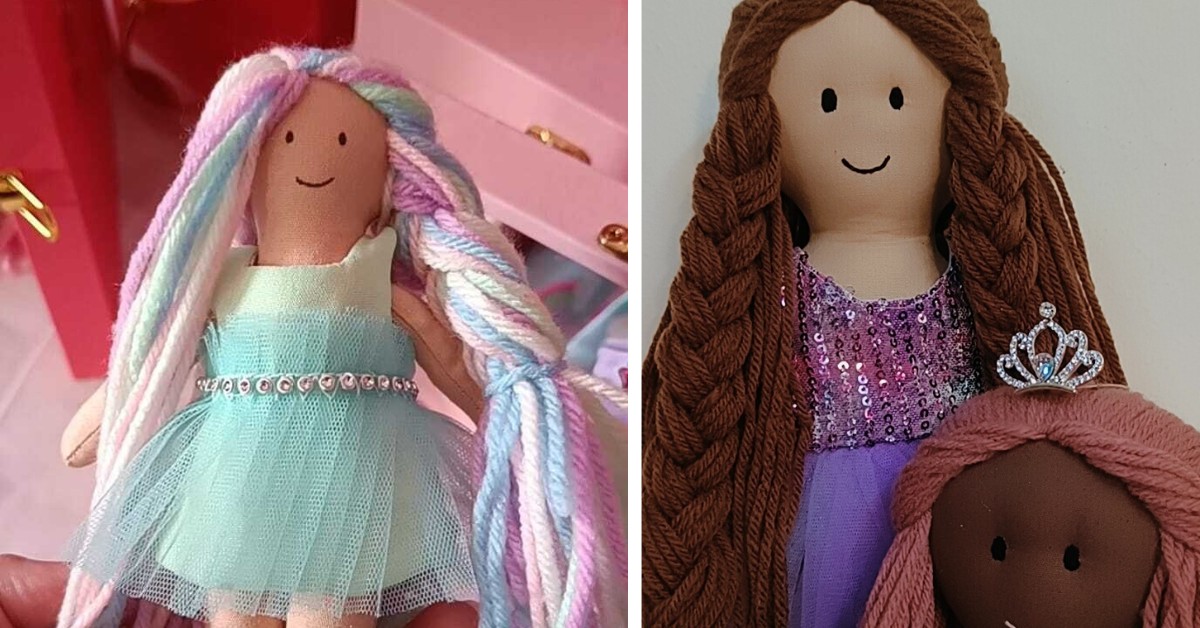 The long hair of the dolls is made from wool, sewn partially by machine on specific sides and finished by hand
The long hair of the dolls is made from wool, sewn partially by machine on specific sides and finished by hand
Initially, Veena worked alone, often sewing into the early hours before events. But as demand grew, she realised she could not do it all by herself. “I used to be sewing even during the flea markets because the demand was more than I could keep up with,” she says.
She tried outsourcing the work to women’s empowerment groups but faced issues with quality and consistency. Eventually, she decided to bring the entire process in-house.
Today, she runs the business out of a small workspace with three full-time women employees. She trains them herself, often hiring women with no prior income or work experience. “If they can operate a sewing machine, I can teach them everything else,” she says.
“Now they are financially stable enough to support themselves, and we work like a family. They even help look after Tara when she’s with me in the studio or at home,” the mother adds.
How does she make 100 dolls at one go?
Each doll is brought to life through a carefully designed assembling process, an approach that evolved out of necessity. In the early days, the entrepreneur made each doll from start to finish by herself. It was a time-consuming effort that took nearly a day or two per piece.
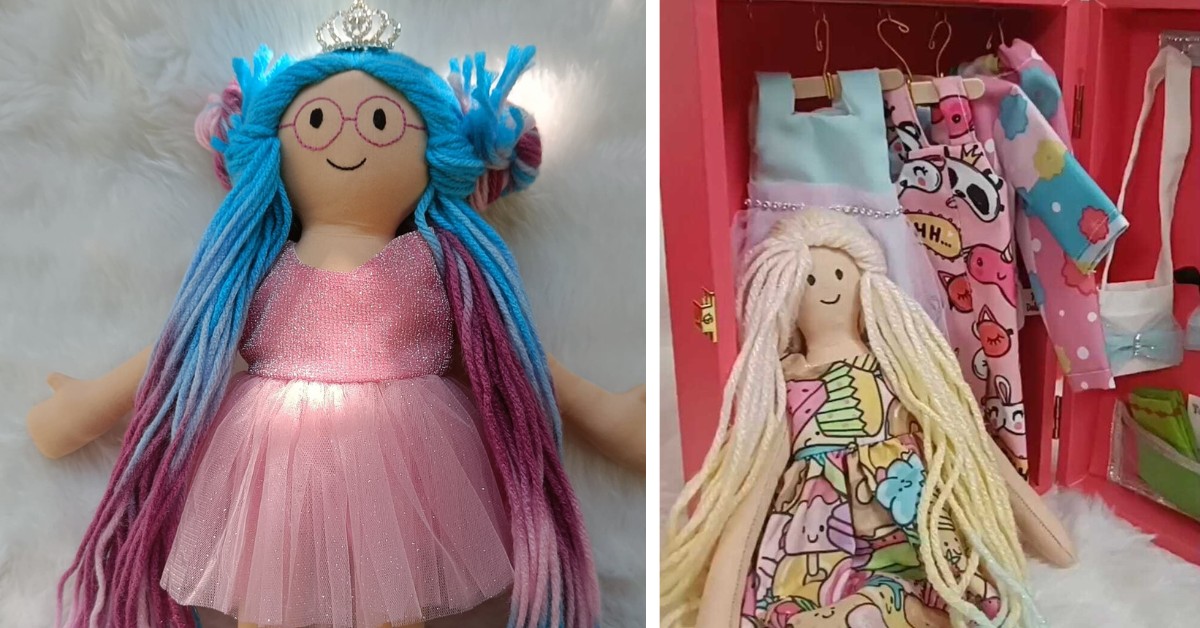 Children can play dress-up games as the clothes are not stitched to the dolls
Children can play dress-up games as the clothes are not stitched to the dolls
As demand grew, she realised the only way to keep up was to break down the process and assign specific tasks to different people. “I put some thought into it and figured out how to make it work like an assembly process, once I had more people to help,” she explains.
The process begins with tracing patterns onto fabric for around 100 dolls at a time. These are then cut, stitched along the outlines, and turned inside out. The next step is stuffing, where each doll is filled with a cotton-polyester mix, since pure cotton tends to clump after washing. Once stuffed, the dolls are sewn shut, and their features, such as eyes and mouths, are drawn by hand with fabric markers.
The hair, one of the most striking features of the dolls, is made from soft and tangle-free wool. It is machine-stitched on specific sections for durability and then finished by hand to give each doll a unique look.
Alongside the dolls, the entrepreneur also designs a variety of clothing such as night suits, gowns, and traditional outfits, all in different patterns, allowing children to dress and redress their dolls as they please.
Each member of her small team of three women now handles a dedicated part of the production line. One traces and cuts the patterns, another stitches the body, and the third assembles and finishes the doll.
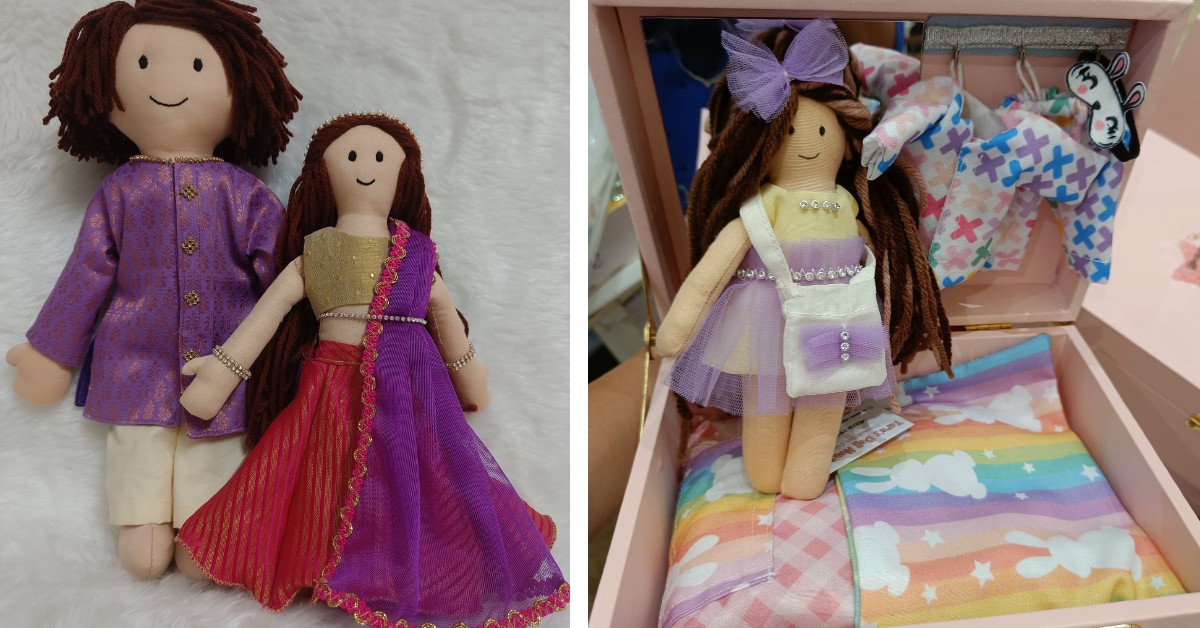 The dolls also offer a cultural story as they combine fashion with tradition
The dolls also offer a cultural story as they combine fashion with tradition
What once took an entire day now takes just 45 minutes per doll. Together, they produce up to 200 dolls a week. Even the tiniest bits of leftover fabric are saved and repurposed into doll beds, pillows, bows, scrunchies, or other accessories. “Nothing goes to waste. That is non-negotiable for me,” the mompreneur says with conviction.
Anagha (25), head of design at Tara’s Doll House and a graduate in fashion designing, smiles as she reflects on how it all began. “When I first came in for the interview, what caught my eye was how soft and cute the dolls looked. I hadn’t seen anything like it. I thought it would be interesting to give the job a shot,” she says.
It started as curiosity but soon turned into pride. “They are all handmade with natural materials like cotton and wool. Each doll looks different, like they have their own little personality. It feels really special,” she adds.
As one of the first employees, Anagha helped shape the designs that have become Tara’s Doll House staples. “Veena akka and I designed almost all the existing doll lines. The smaller the doll, the tinier the dresses, and the harder the work gets. She is very particular about the finish, and we always keep an eye on that,” she explains.
For the designer, seeing children engage with the dolls is the biggest reward. “When I see photos of kids hugging the dolls, naming them, cuddling them, it makes me fall in love with my work every day,” she says.
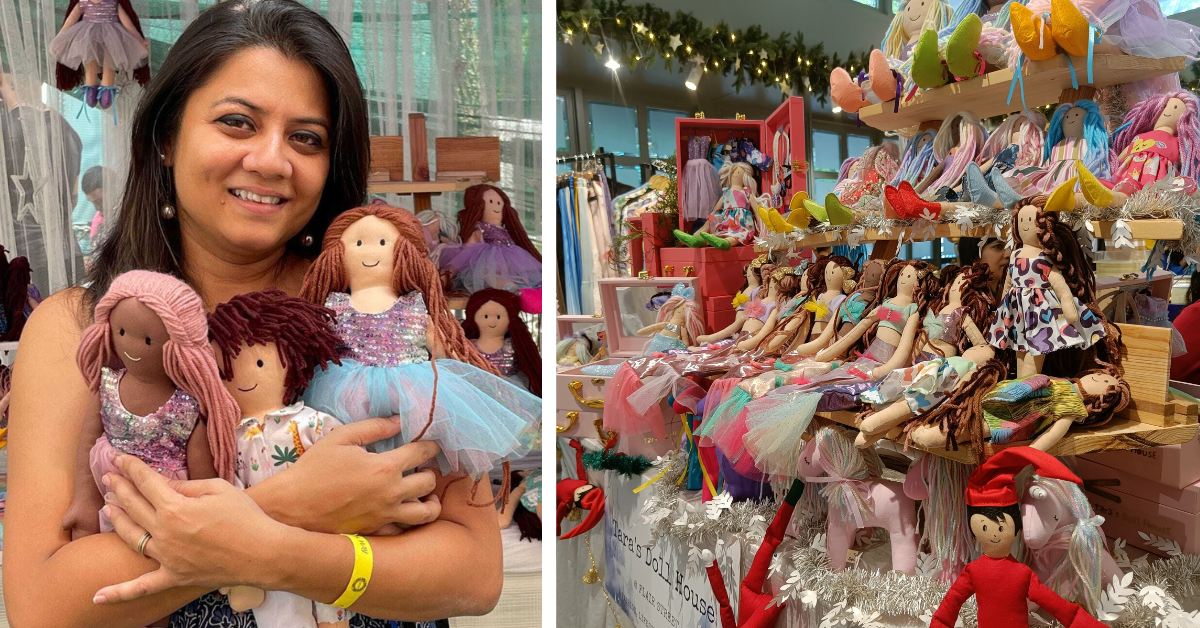 Veena gets most of the inspiration and creativity for her dolls from her daughter
Veena gets most of the inspiration and creativity for her dolls from her daughter
She adds, “I did not know much about sustainability before, but now it feels amazing knowing that nothing goes to a landfill. That makes me proud.”
What sets these dolls apart, she says, is the heart behind them. “They feel more real, not just a toy off a shelf. We sew with our hands and hearts, each doll is made slowly and with love. And the best part? I am not treated like just an employee here. I am part of the family,” she emphasises.
Where fashion meets tradition, and every doll tells a story
The dolls are also fully customisable, customers can choose the length and colour of the hair, skin tone, and even outfits, making each doll feel personal and special. This not only enhances the emotional connection children have with the toys but also reinforces Veena’s commitment to thoughtful and sustainable design.
But the dolls offer more than just sustainability, they also tell a cultural story. The entrepreneur introduced the Fadition Dolls line, combining fashion with tradition. “We wanted kids to see themselves in their dolls, and to feel connected to their roots,” she says.
Each doll comes with two outfits, while one is modern, the other is inspired by regional Indian attire. “If a child is from a Punjabi household, the doll might come with a ghagra. For South Indian kids, it could be a pavadai or langa voni. It is about representation,” she explains.
 The smaller designs like unicorns are priced at Rs 500, and the 12-inch doll is priced at Rs 1,000.
The smaller designs like unicorns are priced at Rs 500, and the 12-inch doll is priced at Rs 1,000.
And her daughter remains at the heart of the brand, not just in name but in ideas. “One day, she suggested I make a card so people could choose the hair and skin colour they want,” Veena recalls with a smile. “It was a brilliant idea, and that is what led me to offer customisation,” she adds.
Despite her initial aversion to social media, the entrepreneur has embraced Instagram and WhatsApp Business to showcase her work. “I started only because organisers kept asking for my Insta handle,” she laughs.
But she still prefers the buzz of pop-up markets and flea events, where she can meet customers face-to-face. “Talking to people is where I learn the most. Kids give you ideas you would never think of,” she adds.
Her dolls are priced thoughtfully, maintaining a balance between quality and accessibility. The smaller designs like unicorns are priced at Rs 500, Rs 1,000 for the signature 12-inch doll that comes with an extra outfit, and up to Rs 3,500 for the deluxe dollhouse sets complete with wardrobes and bedding. “The idea is to keep them affordable without ever compromising on quality,” the entrepreneur explains.
“It still amazes me. It was never meant to be a business.”
From that first night of sewing to now selling 150–200 dolls a month, Tara’s Doll House has grown into a business generating Rs 2 lakh in monthly revenue. “It still amazes me. It was never meant to be a business. It was just something I made for Tara. But it turns out, other parents were looking for the same thing,” says the mompreneur.
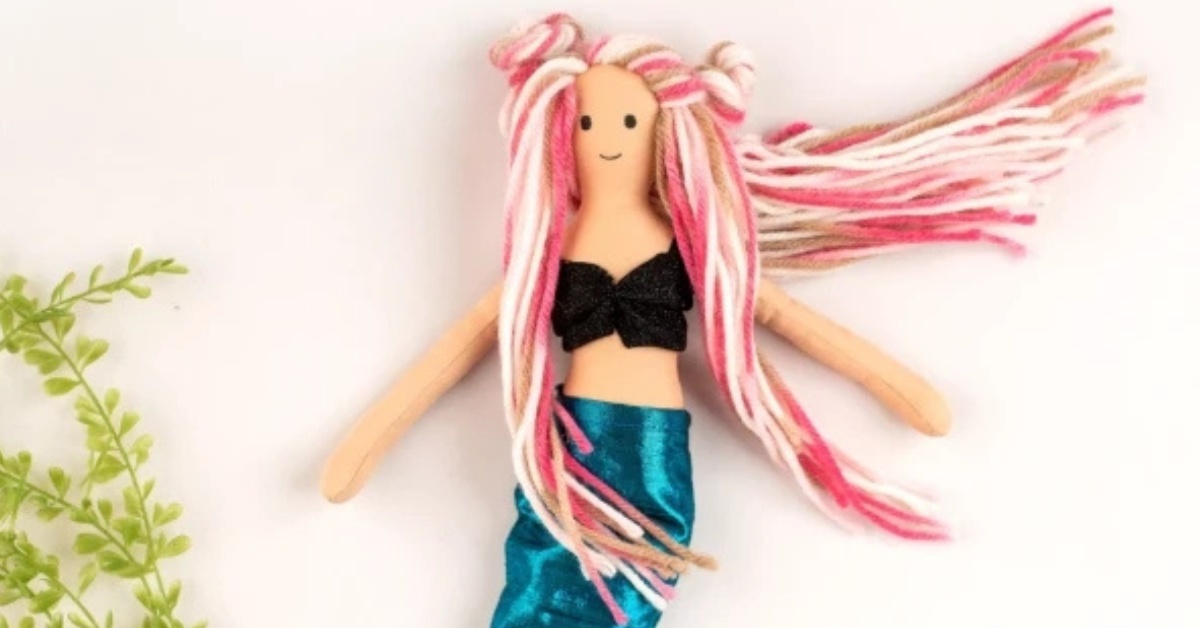 Tara’s Doll House has grown into a business generating Rs 2 lakh in monthly revenue
Tara’s Doll House has grown into a business generating Rs 2 lakh in monthly revenue
Pallavi, 35, a special educator, first discovered Tara’s Doll House through a friend’s recommendation, but what drew her in was how simple and relatable the dolls and their tiny homes felt. “They looked so much like me and my daughter,” she says, with a fond smile.
For her daughter, the doll has become more than just a toy. “She is like a family member now, living inside her little wooden box,” Pallavi shares. “My daughter bathes her, feeds her, takes her for parties, and through this play, we pass on small but important everyday learnings,” she adds.
In an age of noisy and flashing plastic toys, Pallavi appreciates the beauty of handmade play. “There are some parents like me who are always on the lookout for toys that align with our values, like slow living, natural materials, and a gentler approach to childhood,” she says.
“As a child, I used to sit with my grandmother and stitch clothes for my dolls. Tara’s Doll House brings back those memories. And now, thanks to these handmade dolls, my daughter gets to relive a part of that, too,” she adds.
Balancing motherhood with entrepreneurship has been no easy task. But Veena sees it as her greatest joy. “There was a fancy dress competition at Tara’s school, and I asked her what she wanted to be when she grew up. She said, ‘I want to be you.’ That was everything,” she says proudly.
In an age of disposable toys and digital overload, Tara’s Doll House stands as a rebellion that is stitched with care, rooted in values, and powered by love.
Edited by Vidya Gowri; All pictures courtesy Veena Peter
News